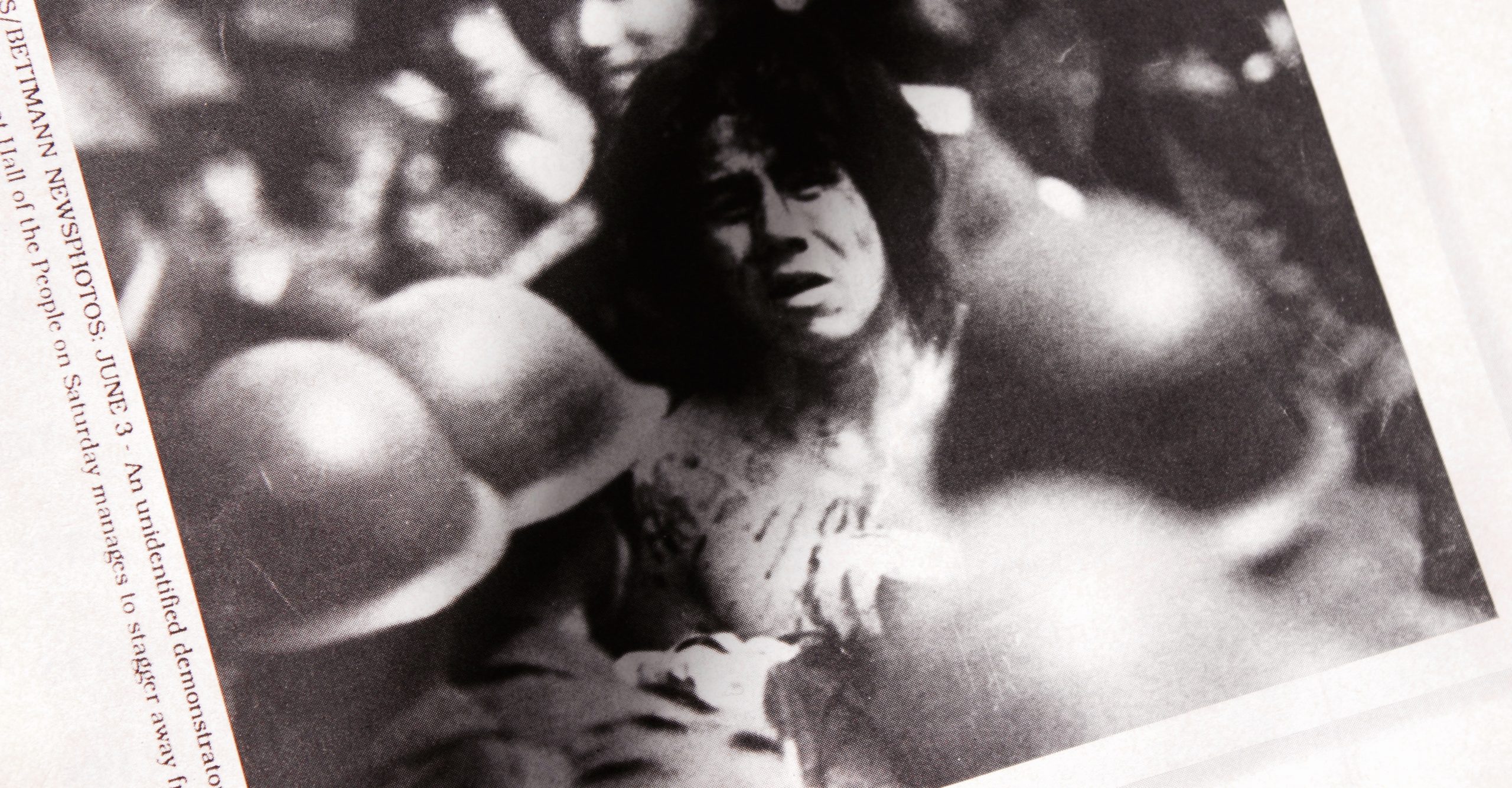The full-page advertisement featured a photo of a dismayed Chinese student covered in blood in Tiananmen Square, positioned above several paragraphs extolling the tyranny-checking powers of the Second Amendment. The National Rifle Association commissioned the ad 27 years ago, after Chinese troops massacred hundreds of peaceful pro-democracy protesters in Beijing, provoking an international outcry.
The Washington Post and USA Today published the ad, but the two leading newsmagazines of the era — Time and Newsweek — refused. The NRA had begun its turn from a hunting and sporting organization into a hard-line defender of gun rights and Revolutionary-era democracy a decade before. The Tiananmen ad was evidence of a new tactic for the organization: disseminating politically-charged ads that capitalize on fears of mass violence or government tyranny as a way to forward its cause.

Entitled “Today’s Headlines Remind Us Why,” the 1989 ad opens with a lament that the tens of thousands of students amassed in Tiananmen Square didn’t have the right to carry guns to defend themselves. This lack of civilian firepower, the ad suggests, led directly to the deaths of thousands that day in June. “Because tyranny cannot tolerate armed citizens,” the ad copy reads, “the brave young Chinese could only hurl words and hold out empty hands against an army.”
The ad then addresses Soviet Georgia, where a “totalitarian regime” had confiscated “66,000 personal firearms.” Free speech, the NRA implies, is not enough to stave off dictators, who “are quick to send their soldiers against speechmakers,” something that would not have happened if its citizens were armed.
“The National Rifle Association’s defense of firearms isn’t just about hunting, or competitive shooting, or even personal protection,” the closing paragraph reads. “The right to own a firearm is a statement about freedom.”
The group has forwarded the idea that civilian gun rights are the antidote to totalitarianism since the early 1960s, when it furthered the widely discredited notion that Third Reich-era gun laws in Nazi-occupied Europe made the Jews defenseless against ghettoization, and ultimately genocide. That idea was most recently amplified by Ben Carson during the Republican primary battle.
Andrew J. Nathan, a political science professor at Columbia University, tells The Trace that if the Chinese students had handguns at Tiananmen Square, “the result would have been an even worse disaster than what occurred. The students were outmanned by huge numbers” — an estimated 10,000 troops — ”and there is no way that, even armed, they could have won that battle.”
When the ad ran in 1989, LaPierre served as the executive director of the NRA’s lobbying arm, the Institute for Legislative Action, and told the New York Times that Time and Newsweek’s decision not to publish the ad was “amazing,” adding that his organization was “saddened” by the fact that free speech exists in America only “if magazines or television agree with your opinion.” The NRA felt that the rejection was notable enough that the group referenced it in the ad copy: The sentence ”Time and Newsweek magazines rejected publication of this message for undisclosed reasons” ran in some versions.
Fear-based marketing in the aftermath of a tragedy is now standard practice for the NRA. Three days after the Orlando massacre, the group released a short video on their official YouTube channel in which the AR-15 is portrayed as “America’s best defense against terror and crime.” The assault-style weapons, a veteran U.S. Navy Seal says in the video, are intended for “ordinary Americans trying to survive in an age of terror,” adding that the Founding Fathers knew that “the only way for us to stay free was by having whatever guns the bad guys have.”
Five months after it rejected the ad — which can today only be found in physical copies and microfiche facsimiles of the four publications that ultimately ran it — Time put then-NRA president Joe Foss on its cover.
“Who is the NRA?” the headline reads. And then: “A look at America’s embattled gun lobby.”
[Photos: Team Trace]


